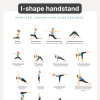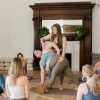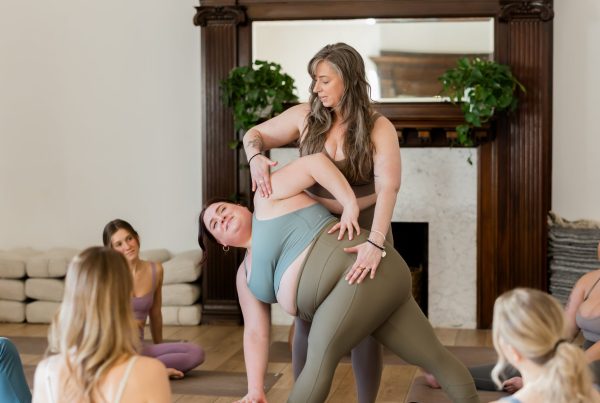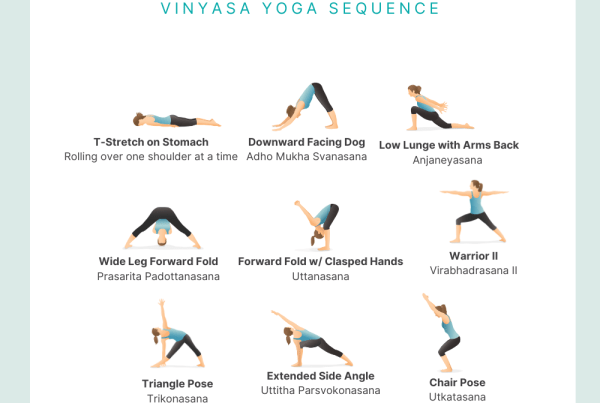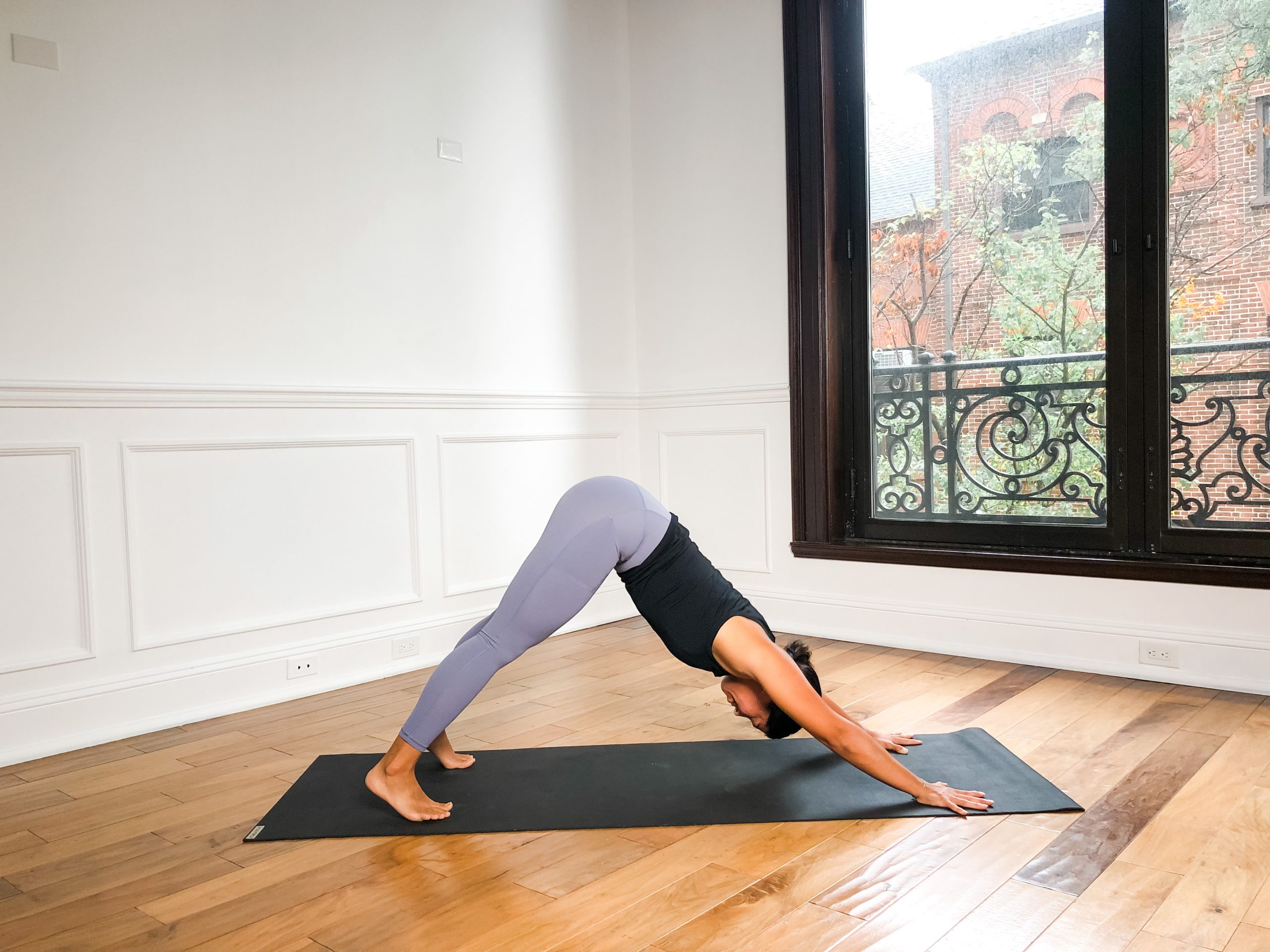
I think there is a misconception that once we start attending yoga, our lives will change. Like there is an expectation that as soon as we step onto our mats for the very first time, that we’ll instantly gain everlasting presence and peace.
I think it’s the same for other activities, anything from our jobs, to parenting, to cooking. We start something and instantly expect that we’ll be good at it. We get frustrated when two weeks pass by and we don’t have a handle on the tasks in front of us and then subsequently either gain resentment towards others who seem to have it all together or we quit.
We go on searching and searching for things that we’ll be good at with little to no effort. We look for things to be easy and effortless instantaneously. But the thing is, if we wish to be good, (or at least better at anything) we have to be consistent. We have to consistently show up for ourselves in all aspects of our lives, on the easy days and on the hard days. Actually, showing up on the easy days makes it possible for us to show up on the hard days.
Our lives can and do change from practicing yoga. Yoga grants us the opportunity to still the fluctuations of the mind and view ourselves in a clear manner… but this only happens with consistent practice. By showing up every day, every week, every month, we practice stepping into ourselves. We practice lessening distractions around us. We practice returning to our breath and bodies when we notice the mind has wandered. We practice clearing the dirt off of our muddied lenses from which we gain through the natural process of life. The more consistent we are in showing up, the easier and more effortless all of this becomes.
What happens if we’re not consistent with our yoga practice? Well I can almost guarantee that distractions will remain, our breath and bodies will feel way less familiar and harder to access, and in the process of clearing dirt off our lenses, more dirt will accumulate between inconsistent sessions. This is the part that we tend to not glamorize but what every practitioner knows to be true. The effort it takes to consistently show up for ourselves in practice…it’s not easy, but it’s absolutely worthwhile.
Peak Pose: Downward Facing Dog (Adho Mukha Svanasana)
Yes! Downward Facing Dog can ABSOLUTELY be a peak posture. In fact, we do Downward Facing Dog so many times in vinyasa yoga I think it is absolutely worthwhile to have this posture be a peak pose every now and then to refine so that it can consistently be a place we return to as a home base.
Supporting Pose 1: Upward Bound Hands Pose (Urdhva Baddha Hastasana)
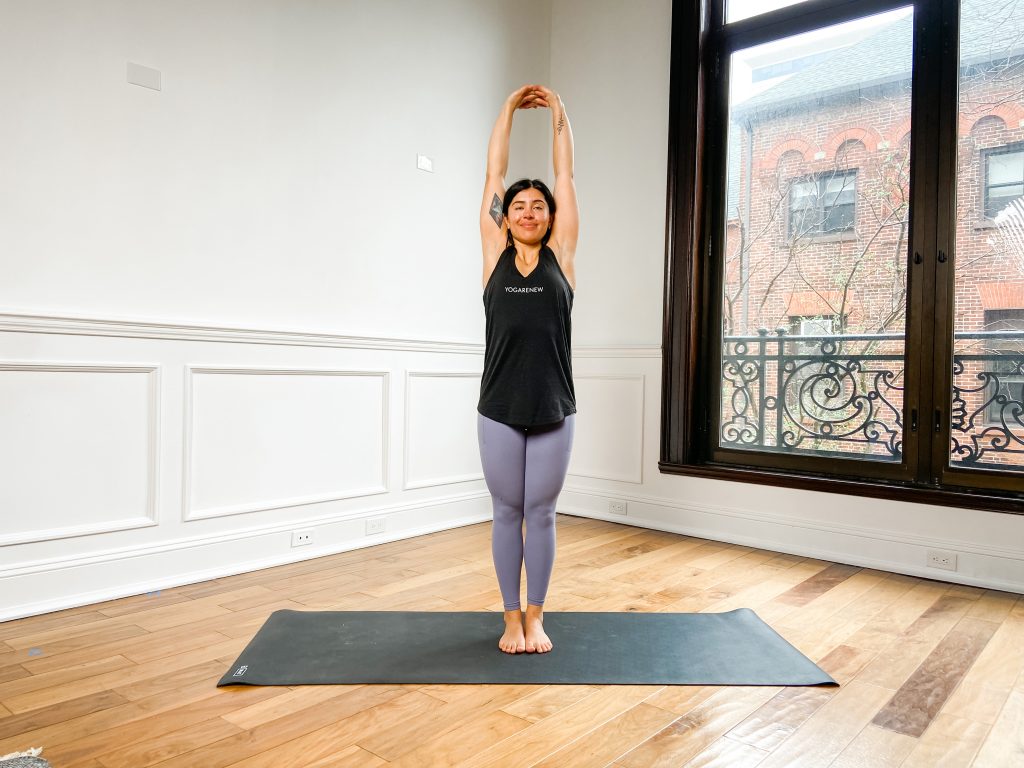
Upward Bound Hands (Sanskrit: Urdhva Baddha Hastasana)
This pose is perfect for using the arms and legs to stretch through the torso. In downward facing dog, we need to straighten the arms and press the floor AWAY so that we can keep the torso long. Standing in the upright position makes this a little bit more accessible.
How to do it:
- Stand in Mountain Pose with your palms together in front of your sternum.
- Interlace your hands with the right thumb on top.
- Stretch your palms forward and then stretch the arms up to the sky. Stretch the arms up so much that the arms firm in around your head.
Supporting Pose 2: Wide Leg Forward Fold (Prasarita Padottanasana)
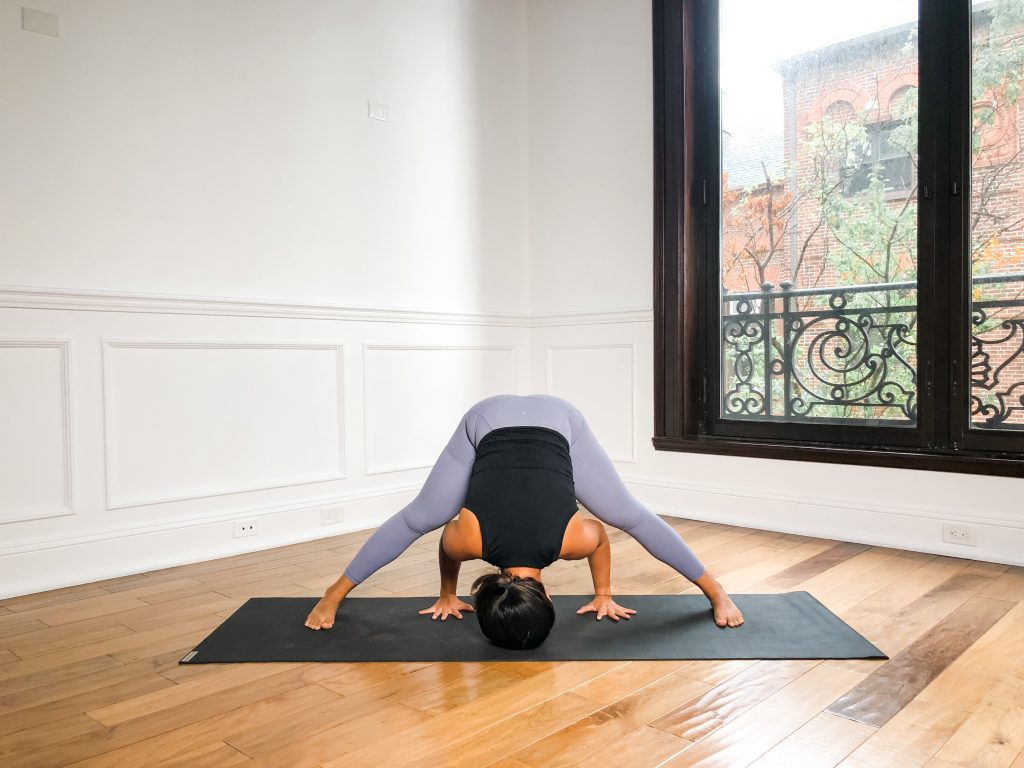
Wide Leg Forward Fold (Sanskrit: Prasarita Padottanasana)
Wide Leg Forward Fold can practically teach anything, but in this particular instance it is a valuable tool to teach the straightening of the legs and the lifting of the kneecaps. The widening of the legs may make the lifting of the hips a bit more easeful.
How to do it:
- Turn towards the long edge of your yoga mat with the feet more or less parallel to one another and the short sides of your mat.
- Lift your toes and lift your kneecaps up and fold between your legs.
- Keep lifting the kneecaps up as you bring your hands to the floor and walk them underneath the legs so the fingertips and inner arches of your feet are in one straight line. Keep the fingers and toes going in the same direction.
- Tuck your chin slightly and pull the crown of the head towards the floor.
Supporting Pose 3: High Lunge (Utthita Ashwa Sanchalanasana)
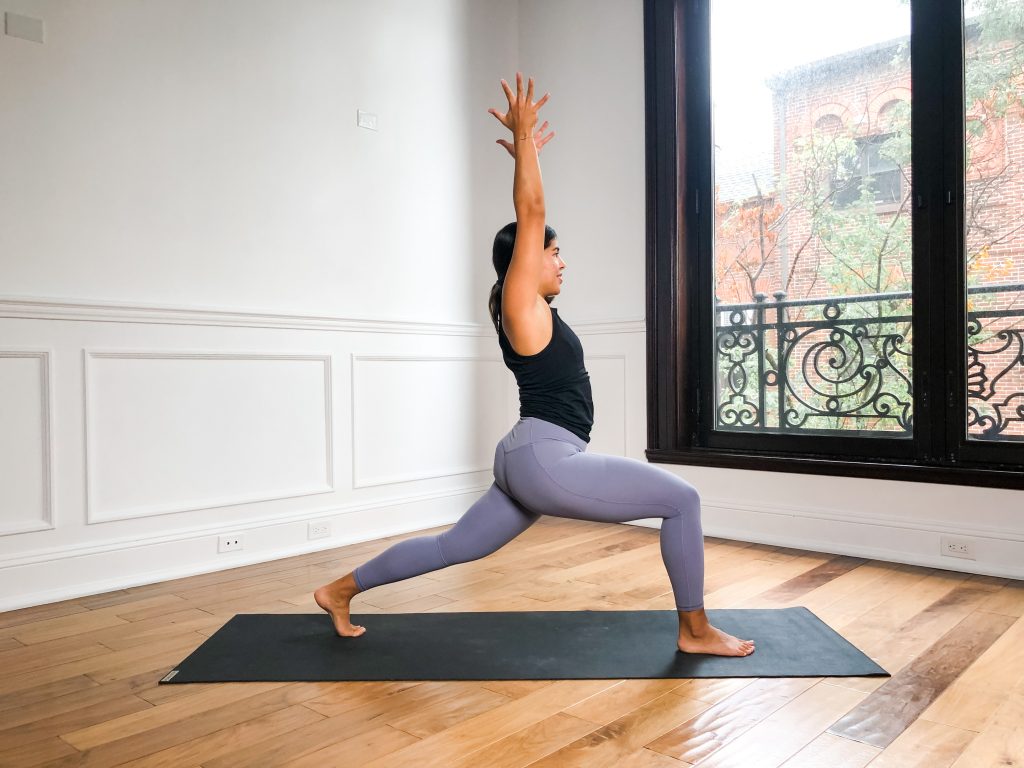
High Lunge (Sanskrit: Utthita Ashwa Sanchalanasana)
High Lunge is a perfect closed hip pose to incorporate into your sequence towards Downward Facing Dog. You can work on straightening the arms overhead while simultaneously working on straightening the back leg. Remember in Downward Facing Dog, we have two straight legs and two straight arms!
How to do it:
- Take your right foot towards the top of your mat and the left foot towards the back of your mat with the heel lifted.
- Bend the right leg to 90 degrees.
- Press the left thigh up towards the sky while engaging the quad.
- Reach the arms up and overhead while spreading the fingers.
- Firm the biceps towards your head to straighten the arms.
Peak Pose: Downward Facing Dog (Adho Mukha Svanasana)
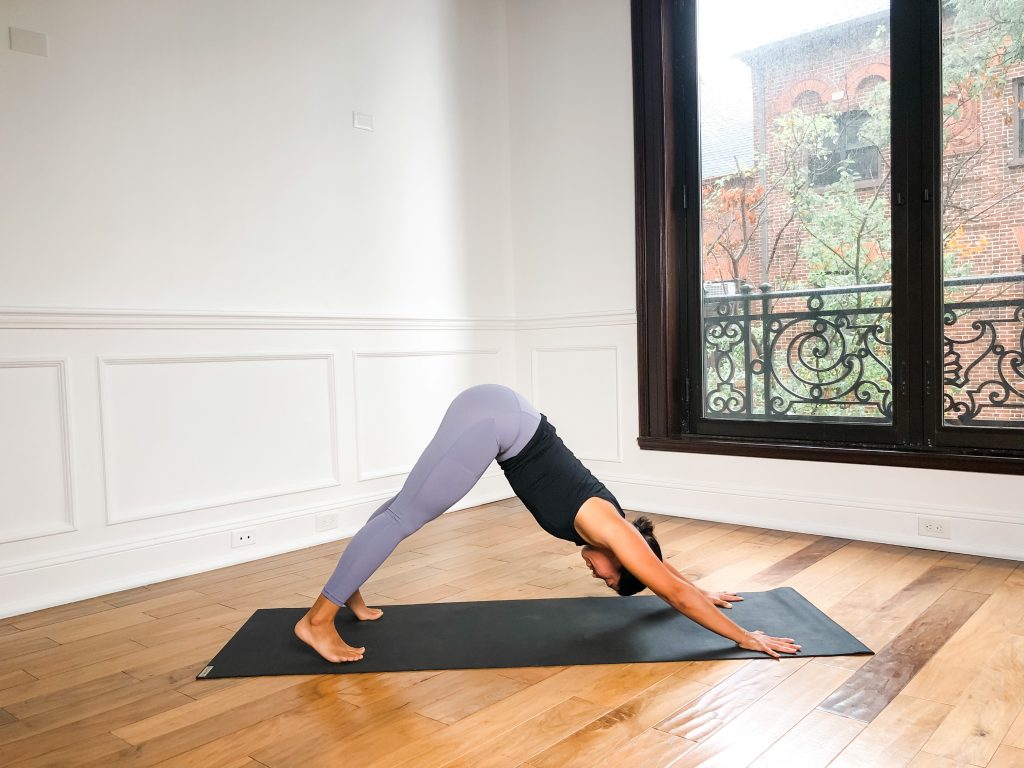
Downward Facing Dog (Sanskrit: Adho Mukha Svanasana)
This pose is a staple in almost every single yoga class. Perfecting it can greatly enhance your practice. Once you recognize the alignment points, getting into this pose becomes relieving and energizing at the same time!
How to do it:
- From table top, walk the hands forward a little bit and knees back a little bit.
- Tuck the toes, lift the knees, and lift the hips up.
- Press your heart towards your knees while straightening the arms and firming the biceps towards the head. Let the head relax between the arms.
- Lift the kneecaps as you straighten the legs and press the thighs back. Lifting the heels and/or widening the feet can assist in the straightening of the legs.
- Press the thighs back and press the hands down to lengthen the spine and stretch the torso.



